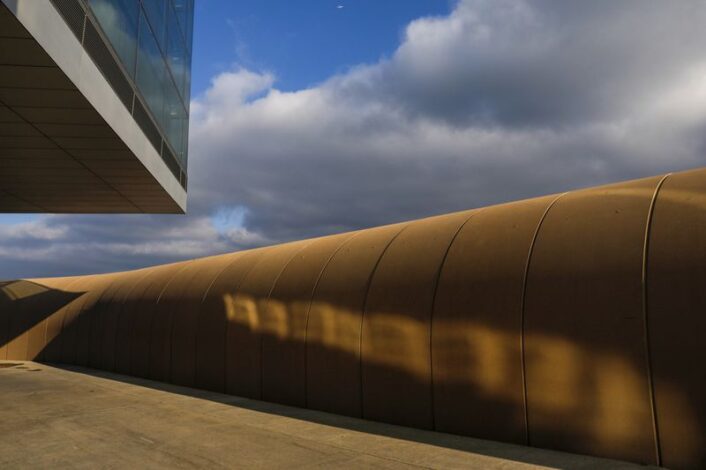Architecture
Lake Michigan’s “circus tents”
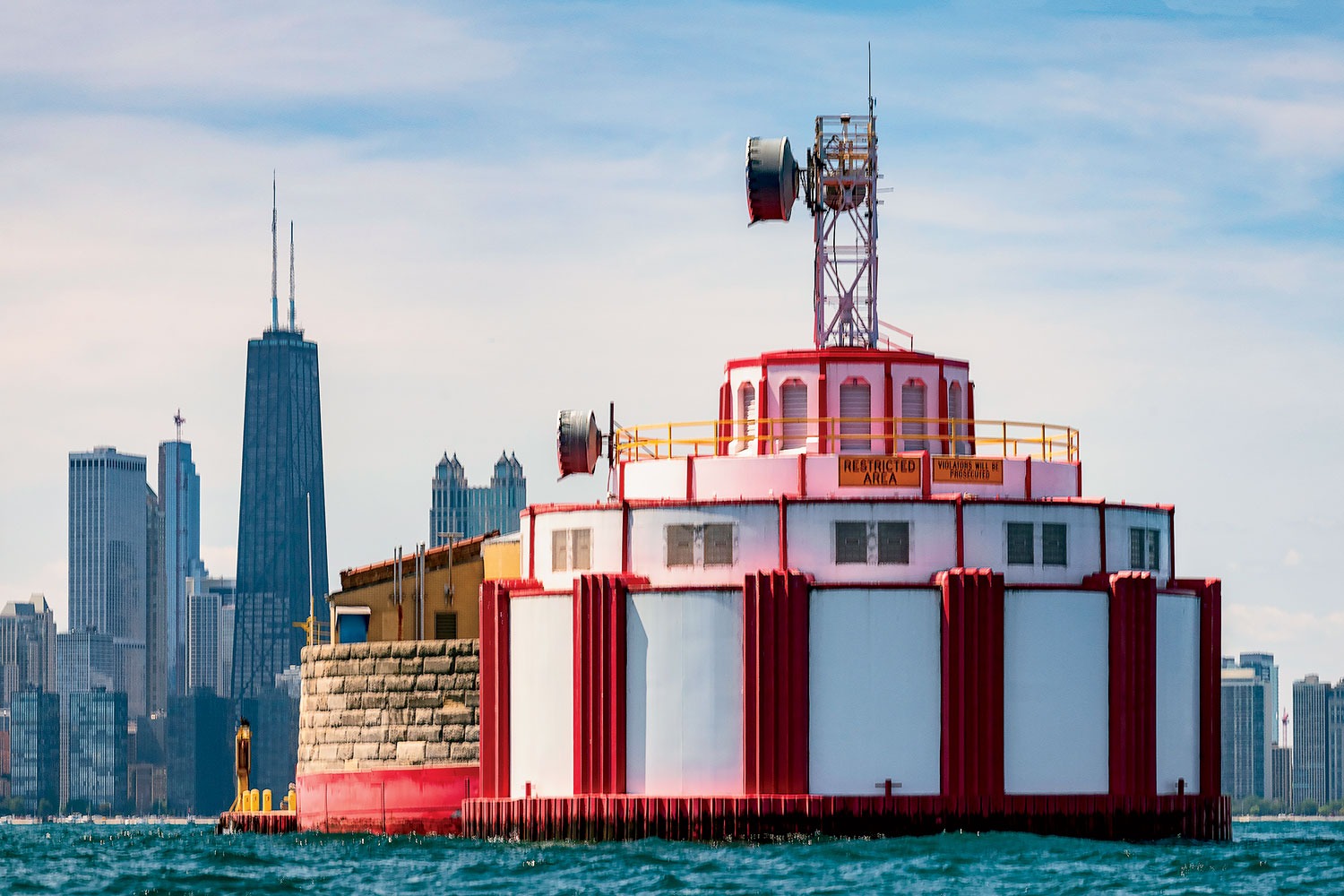
A floating marvel.
Image courtesy of: Chicago Magazine, photographed by: Barry Butler
Anyone who has visited Chicago and driven down Lake Shore Drive has probably wondered what those red and white round buildings in the middle of Lake Michigan are. From afar, these buildings resemble old-fashioned circus tents. The structures are visible from miles off Lake Michigan’s shoreline and they are discernible thanks to the lighthouse beacons that shine at night.
At the time they were constructed, these unusual structures were “engineering marvels.” In addition to their “job” of providing clean water to the city, they were part of the Chicago’s long list of architectural gems. In 2017, Preservation Chicago added the iconic water cribs to their list of “endangered buildings.” The tents joined the Union Station Power House in the South Loop and the Cornell Store and Flats, designed by Walter Burley Griffin as structures to preserve.
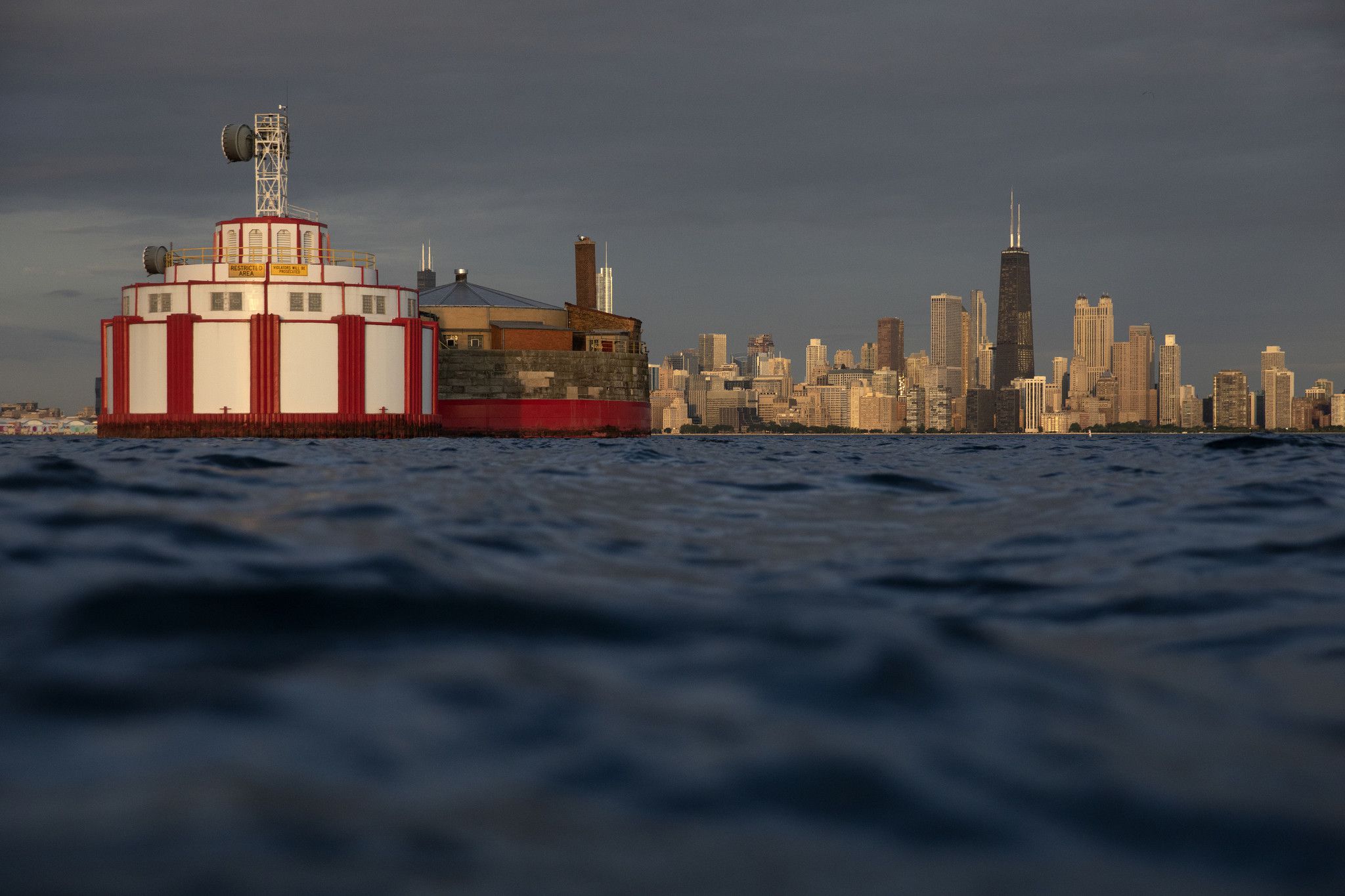
The first crib was completed in 1865, two miles out into the lake.
Image courtesy of: Chicago Tribune
Initially, the City built nine water cribs. They were necessary because Chicago’s growth during the 1850’s and 1860’s put a large strain on the fresh water system which collected water near Lake Michigan’s shoreline. Additionally, pollution in the Chicago River often made the water unsafe.
Within 27 years, Chicago’s population grew from 300 people to 100,000 and the Chicago River, which previously served as a faucet for clean water, became a virtual cesspool full of raw sewage and waste from the city’s many slaughterhouses. Cholera and typhoid fever spread rampant throughout the city. All of this lead to hiring Ellis Chesbrough in 1861; he would serve as the Chief Engineer of the newly formed Board of Sewage Commissioners with the intent of improving the growing city’s sanitary systems and water supplies.
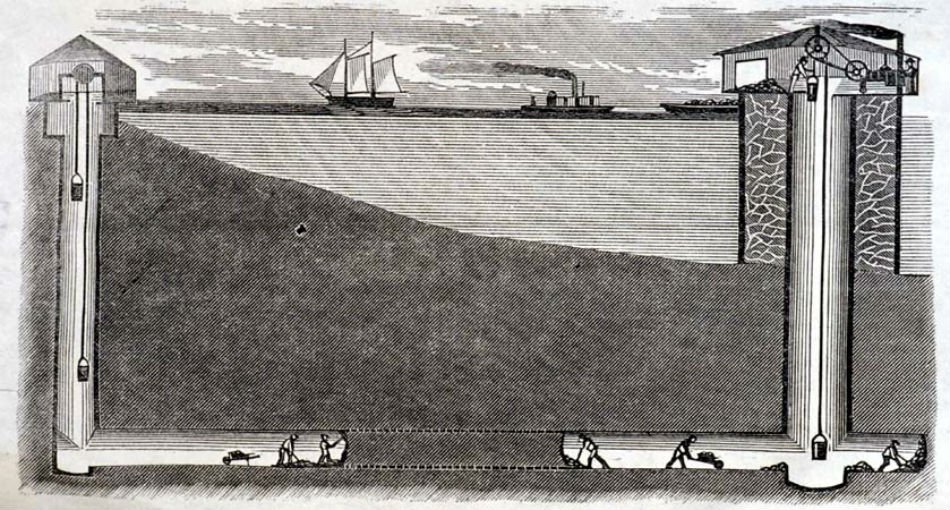
From a City of Chicago 1954 report.
Drawing courtesy of: The City of Chicago Library
Chesbrough’s ingenious idea of locating the water intake stations two miles out into Lake Michigan was because this was past the spot in the lake where filth remained. The water cribs were connected via a deep tunnel to a pumping station and the water tower on shore… specifically the infamous Chicago Water Tower and Pumping Station on Michigan Avenue. Over a period of eight years (between 1865 and 1935), the city constructed nine water cribs.
Specifically, Chesbrough’s plan called for interconnecting tunnels… a system of cribs were connected to the water supply via underwater lake tunnels. The first tunnel was completed in 1867; it connected an intake crib two miles offshore to Michigan Avenue’s pumping station. In 1898, the existing eight water intake cribs were able to supply the city with nearly a billion gallons of water each day.
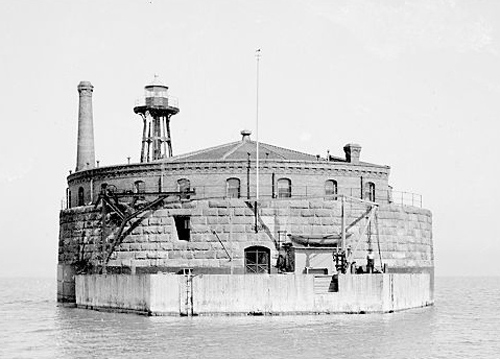
Carter H. Harrison Crib in 1910.
Image courtesy of: Lighthouse Friends
Construction consisted of a wooden, double-walled “crib” that was shaped like a pentagon and was forty feet tall. The structure was built onshore and towed into the lake via steam-tugs; it was lowered into position by filling the hollow walls with stone. A cast-iron caisson was then lowered into the crib’s interior and implanted into Lake Michigan’s floor. Once the water was drawn out, workers entered and excavated a “vertical shaft” to the appropriate depth. Finally, a horizontal tunnel was dug in order to meet the passageway that extended from the shore.
At the crib’s apex, there was a rectanglular building that contained a kitchen and bedroom for the crib keeper. Above this structure, there was a square tower that supported a birdcage lantern which served as a beacon to keep those out on the water safe. In addition, the crib also had a fog bell that struck every minute during periods of poor visibility. Similar to lighthouse keepers, crib keepers lived on the crib year-round for the purpose of tending to the bells, operating the intake doors, and ensuring that ice did not form in the interior.

For several years now, peregrine falcons have called Lake Michigan’s water cribs home.
Image courtesy of: DNA Info, photographed by: Stephanie Ware
From the initial nine cribs, six remain today yet only two are functioning. There has been a lot of talk about demolishing the remaining cribs; however many in the city feel as though the cribs should receive Chicago’s Landmark designation.
Preservation Chicago, as a one example, suggested that it makes sense to reuse and repurpose these cribs. Chicagoans have often noted that the cribs might make extraordinary off-shore destinations… perhaps a museum, restaurant, or unique event space. Or if nothing else, it is important to remember that many birds, including peregrine falcons, have thrived and hatched chicks at the cribs. As a last resort, maybe the cribs can simple stay “as is…” and serve as offshore landmarks to be enjoyed by all those out on the water for years to come.

